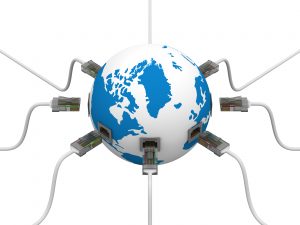 Ethernet is a well established and proven bandwidth solution for transport in both wide area network (WAN) and local area network (LAN) deployments. Developed nearly half a century ago, it is both highly reliable and cost effective.
Ethernet is a well established and proven bandwidth solution for transport in both wide area network (WAN) and local area network (LAN) deployments. Developed nearly half a century ago, it is both highly reliable and cost effective.
While the computing applications of Ethernet are a modern development, the idea of ether dates back to 17th century France. Philosopher Rene Descartes advanced the theory that the universe has no empty spaces. Instead, these voids are actually filled with very fine particles, or ether. The idea of ether was adopted by network developers to describe the idea of a network everywhere — the Ethernet.
Ethernet Defined
Ethernet connects multiple computer systems to create a local area network. Protocols are built into the technology to prevent simultaneous transmissions by multiple systems. Several iterations of the technology exist, such as 1000BaseT, 10GBaseT, and others. The number depicts the ideal signaling speed, base stands for baseband, and T means twisted-pair cable.
By some estimates, Ethernet serves more than 100 million clients worldwide, while other technologies have gone by the wayside. Competing technologies such as SONET, DS3 bandwidth circuit, bonded T1 lines, and MPLS have attracted increasing attention during the past several years. But Ethernet technology provides several distinct advantages.
Advancements
Despite its long history, Ethernet has not remained stagnant. During the past three decades, many enhancements have been added to the technology. Perhaps the most significant upgrade is the technology’s ability to reach distances of up to 2,000 kilometers at speeds of up to 10 Gbps thanks to dense wavelength division multiplexing.
Advances have yielded several advantages over dedicated bandwidth options, not the least of which is multipoint capability.
Advantages
–Speed. Options like DS3 max out at about 45 Mbps, while Ethernet speeds can reach up to 1,000 Mbps. Gig-E protocols will push these speeds even higher.
–Cost. Ethernet is similarly priced to its closest competitors. For point-to-point data and dedicated Internet connections, Ethernet often is considerably cheaper. Better pricing results from available off-the-shelf equipment that costs less initially and is cheaper to scale in the future.
— Flexibility. The nature of Ethernet technology makes it easier to upgrade than options that rely on fiber optics, which can be costly to deploy. This leads to better scalability to meet current and future needs.
— Easy Installation. Configuration is typically simpler than competing technologies and works across a variety of platforms, workstations, and mainframes. In addition, the technology’s long history means many technicians are well versed in how to deploy and maintain the systems.
— Connectivity. Connection of subnetworks to the backbone is often superior because Ethernet can work with Gigabit Ethernet, ATM, and routing switches.
–Cloud Integration. Ethernet can integrate with the cloud to allow access to emerging applications that are increasingly critical to business operations, such as DropBox and Freshbooks.
— Advanced Communications. Emerging communications tools such as video conferencing, collaboration, and VoIP are possible with Ethernet’s high bandwidth.
— Class of Service. Up to eight classes of service can be predefined with Ethernet, allowing the Ethernet WAN to function as an extension of the campus LAN.
Because of the advantages described above and the widespread deployment of the technology, Ethernet truly is evolving into a network solution that covers every place, making it a smart choice for businesses of all sizes. Contact us to learn more about Ethernet and how it can benefit your organization.
